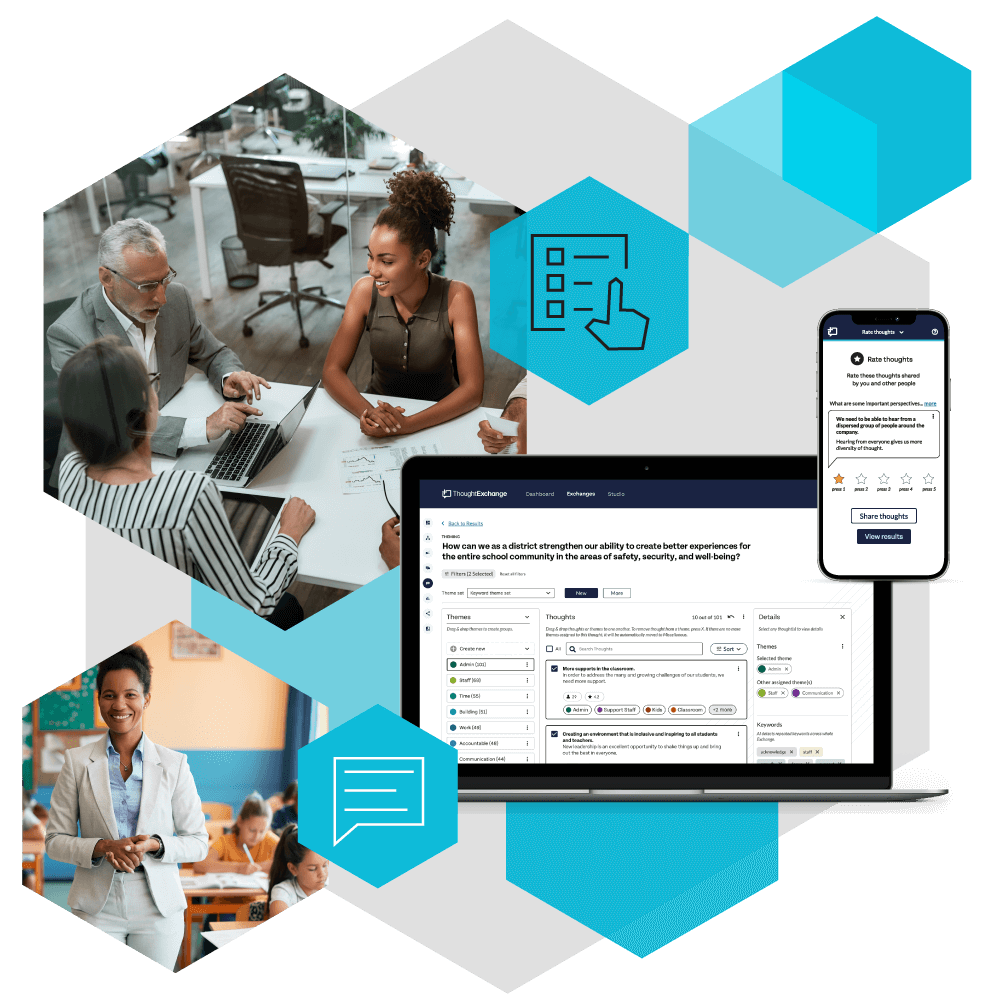Student Voice Brings Actionable Insights to Top-of Mind Issues.








Student Voice in Action: Learners Bring Insights to AI in Schools
Your students’ insights are essential to fostering an optimal learning experience and a thriving school district. Promoting student voice in the classroom increases engagement, equity, and ultimately student success among the many other benefits.
In addition to education leaders listening to and including students’ ideas in the decision-making process, student voice means understanding that young people have unique and valuable perspectives that complement adult wisdom.
While we’ve seen how student voice can enhance education quality and contribute to effective mental health programs in schools; it can be equally effective when navigating new technology in the classroom. Lately, we’ve been exploring the impact of AI in education; what it means for education, and how to implement it safely. And who better to check in with than students?
As a leading engagement and survey platform, we used our software to tap into students’ collective intelligence. Knowing collaboration is key to successful initiatives, we conducted a public student Exchange to hear their thoughts on AI in Education.
Read on to discover the value of using student voice to improve your initiative and help your students succeed—and find out how ThoughtExchange can help you get you actionable insights.
See ThoughtExchange in Action — Explore the Product Tour
In this Article
Accessing student voice with technology
Tapping into your students’ unique perspectives can be challenging, but the right technology can help. Traditional feedback methods—like in-person meetings or standard surveys—can discourage people from sharing their honest thoughts. But an all-in-one community engagement platform like ThoughtExchange can accurately capture students’ perspectives from an entire district in an inclusive, anti-biased environment—efficiently and effectively.
Students need a safe space to share their thoughts. An Exchange is a perfect way to explore solutions to critical issues with students, and get meaningful feedback and relevant results.
Whether you’re working on improving your mental health strategy or safely and effectively implementing new technology in the classroom, a student voice platform facilitates candid, collaborative student conversations that help districts understand and meet their students’ needs and realize their goals more quickly.
Student voice brings ChatGPT insights
Insights from ThoughtExchange student voice engagement platform
Launching an Exchange and making the most of your students' collective intelligence is fast and easy. Choose an open-ended question that aligns with your goals, then share the link and hear from your group. Students can participate from any device.
In our student voice Exchange about the impact of AI on education, we got the following results:
What we asked
Useful features
Anonymity, anti-bias, and moderation features create a scaled conversation
Our version of ChatGPT: TE Advisor
TE Advisor helps you find answers to your most important questions about your results. It works with both survey and Exchange results to quickly analyze your data, no matter what type of engagement you choose or how big your data set is. Ask TE Advisor your own custom prompts, or use some of our suggested prompts in-product to get instant insights into your data.
TE Advisor transforms your engagement data analysis by:
- Summarizing the data and identifying themes
- Providing next steps and targeted messaging
- Answering custom prompts using Ask the Advisor
Want to learn more about TE Advisor?
AI Summary
Summaries are automatically generated snapshots of what participants said in the Exchange. They update daily in Exchanges with active participation.
Here’s what our AI summary for the ChatGPT student voice Exchange looked like:
Common Ground & Differences List
Our Differences analysis
Based on these areas of agreement and disagreement, it appears that education leaders should approach integrating AI tools into their schools from an instructional perspective while ensuring students and teachers prioritize time to connect without technology.
Developing a robust set of guidelines around the use of AI tools in the classroom and ensuring that teachers have accurate ways to assess students’ work for the use of AI will help address some of the concerns around cheating.
Collaborating for successful outcomes
While students can see the potential benefits of using ChatGPT in the classroom, it’s up to education leaders to ensure implementation is done right.
To ensure the picture was complete, we checked in with education leaders about how they were using ChatGPT and what their concerns and solutions were. This collaborative approach got us tons of useful insights on the impact of AI in education.
Improving student success with ThoughtExchange




